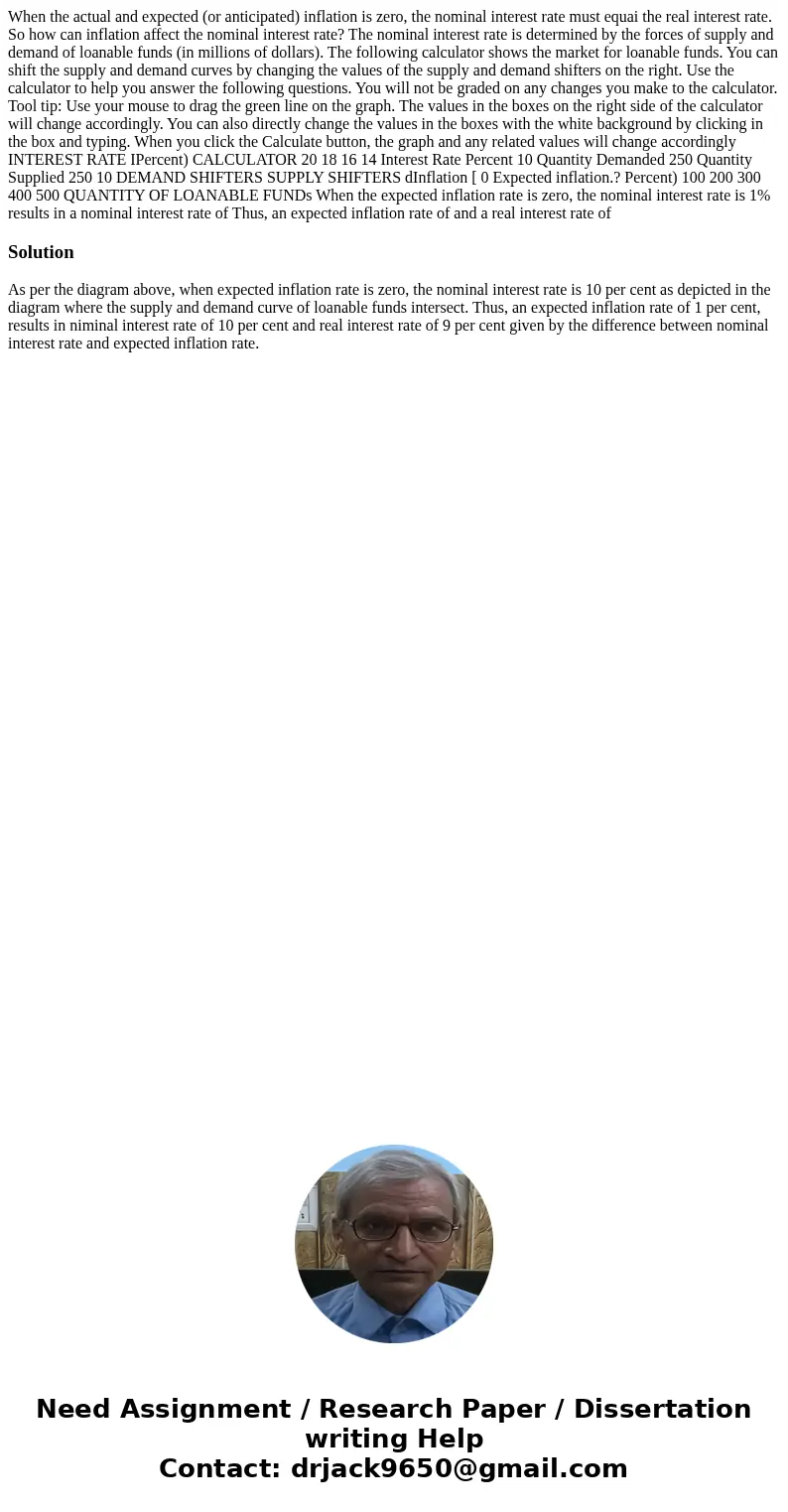When the actual and expected or anticipated inflation is zer
When the actual and expected (or anticipated) inflation is zero, the nominal interest rate must equai the real interest rate. So how can inflation affect the nominal interest rate? The nominal interest rate is determined by the forces of supply and demand of loanable funds (in millions of dollars). The following calculator shows the market for loanable funds. You can shift the supply and demand curves by changing the values of the supply and demand shifters on the right. Use the calculator to help you answer the following questions. You will not be graded on any changes you make to the calculator. Tool tip: Use your mouse to drag the green line on the graph. The values in the boxes on the right side of the calculator will change accordingly. You can also directly change the values in the boxes with the white background by clicking in the box and typing. When you click the Calculate button, the graph and any related values will change accordingly INTEREST RATE IPercent) CALCULATOR 20 18 16 14 Interest Rate Percent 10 Quantity Demanded 250 Quantity Supplied 250 10 DEMAND SHIFTERS SUPPLY SHIFTERS dInflation [ 0 Expected inflation.? Percent) 100 200 300 400 500 QUANTITY OF LOANABLE FUNDs When the expected inflation rate is zero, the nominal interest rate is 1% results in a nominal interest rate of Thus, an expected inflation rate of and a real interest rate of 
Solution
As per the diagram above, when expected inflation rate is zero, the nominal interest rate is 10 per cent as depicted in the diagram where the supply and demand curve of loanable funds intersect. Thus, an expected inflation rate of 1 per cent, results in niminal interest rate of 10 per cent and real interest rate of 9 per cent given by the difference between nominal interest rate and expected inflation rate.

 Homework Sourse
Homework Sourse